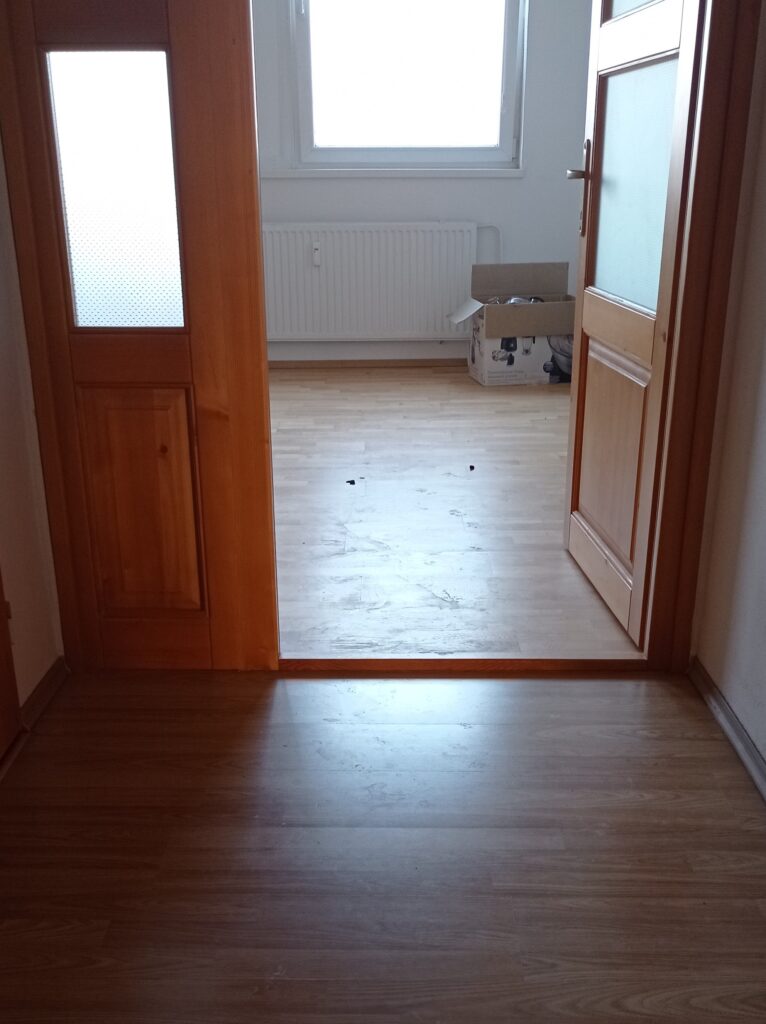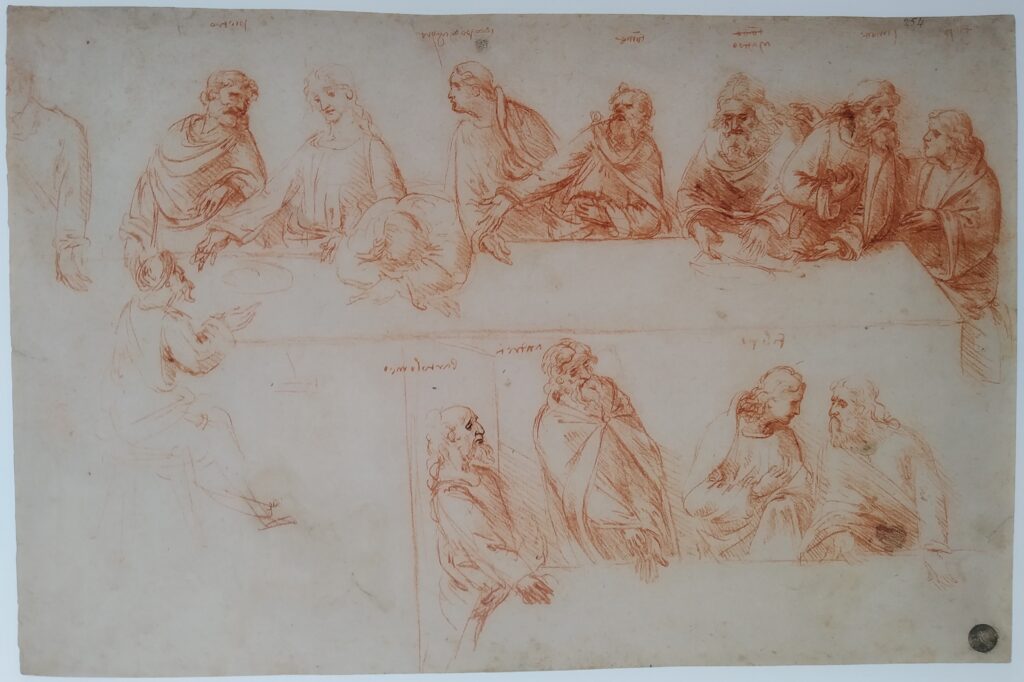
scheme to look for in the Venetian drawing
In every good drawing it is lawful to find a source of light, which determines the further. In the Venetian drawing it is without doubt on the left, I put it somewhere in the middle above the table’s shorter side, right behind the apostle Bartholomew.
More to say, behind Bartholomew is placed an object which becomes a tapestry in the painting of The Last Supper and I presume it serves here also like a window: by which enters a dim light around the dusk time from the outside.
Then we can observe what creates this play of light: how it dances on the figures, skips places behind them and casts shadows this way and that, carving or shaping a 3D reality.
At first it flows in a full force around figures of Bartholomew, Andrew and Filipo. Their bodies cast noticeable shades. As we can observe in the upper part of the picture, then the shine continues along the table and culminates around soft drawn figures of Jesus, Judas and partially John. Maybe we can also see here an – all colours washing out – strong reflection of the sky (see the illustrative image). The light’s source is at the most uncovered position here.
Further from the table is the apostle Peter, already starting to reach John behind Jesus’s back or to give him a discrete sign. Then next to James the Greater is Thomas and the direct light is becoming absent, the apostles’ figures are getting darker shades, a glint is only here and there, as the light’s source is in successive steps literally eaten out by the apostles’s presented physiques.
And all this creates magnificent spectacle of believable living three-dimensional space. This adds an analytical argument to my opinion, connoisseurship, that Venetian drawing is done directly by Leonardo’s hand, which makes sense in every part of it and also as a whole. You need to understand every line of this drawing to get the most of it.

Literature and comments
[1] Interconnected with a lower counterpart by the repeating left arm gesture
[2] The image is taken from: L’uomo modello del mondo; p. 180; Annalisa Perissa Torrini & col.; 2019